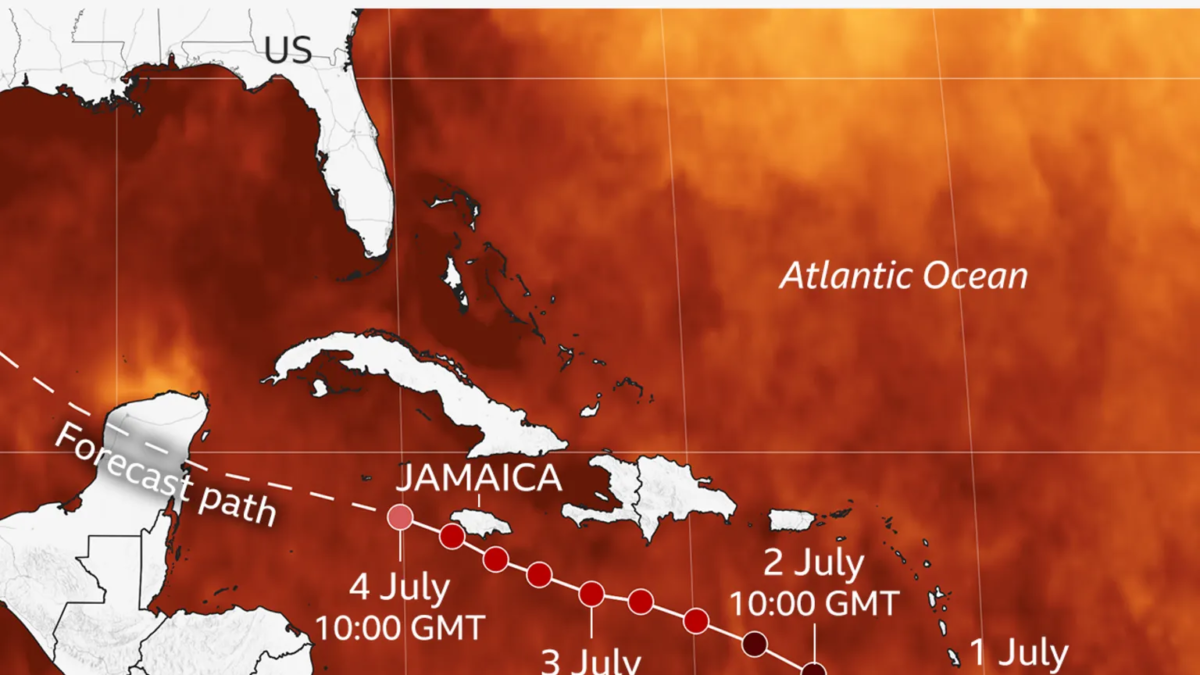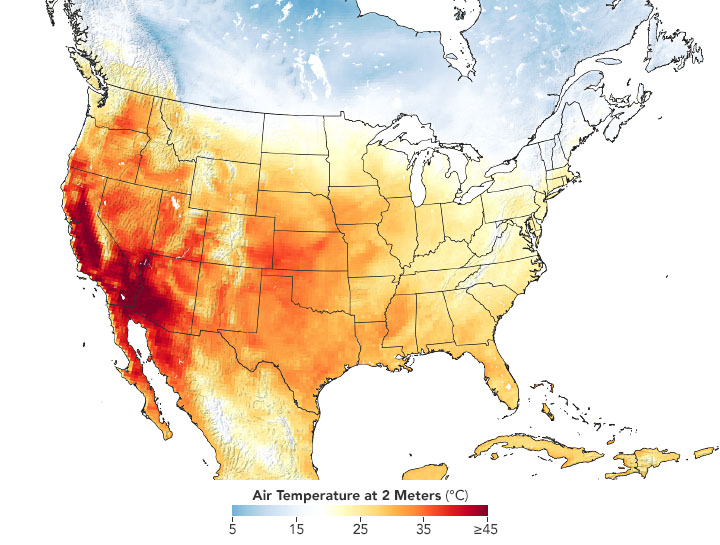U.S. set to drown the world in oil – “The sheer scale of this new production dwarfs that of every other country in the world”
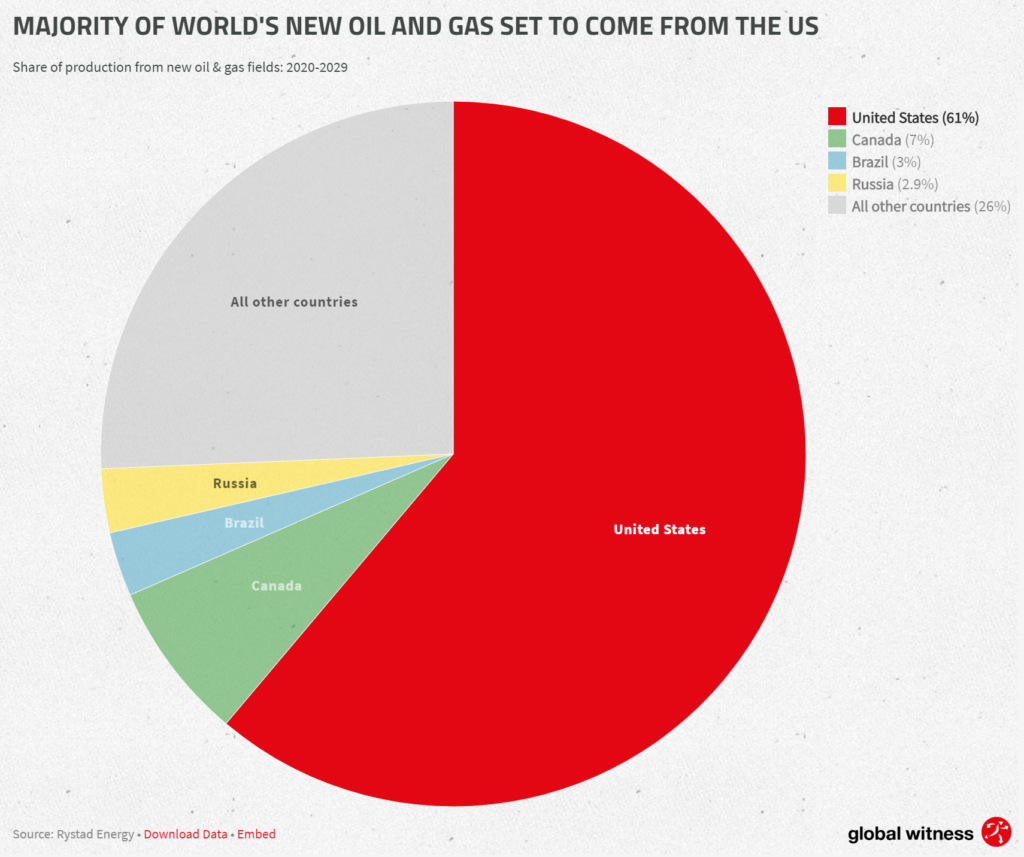
20 August 2019 (Global Witness) – A staggering 61 percent of the world’s new oil and gas production over the next decade is set to come from one country alone: the United States.
The sheer scale of this new production dwarfs that of every other country in the world and would spell disaster for the world’s ambitions to curb climate change – the effects of which we’re already witnessing through massive heat waves, flooding, and extreme weather.
Earlier this year, we crunched the numbers from the latest climate science and industry forecasts and found that we can’t afford to drill up any oil and gas from new fields anywhere in the world if we’re to avoid the worst impacts of climate change.
In our analysis, we assumed that existing oil and gas fields are going to keep on pumping for as long as they can. That means that the decisions about new projects will shape the future for the oil and gas industry and our climate.
And when it comes to these new oil and gas fields, production from the US is set to eclipse the rest of the world.
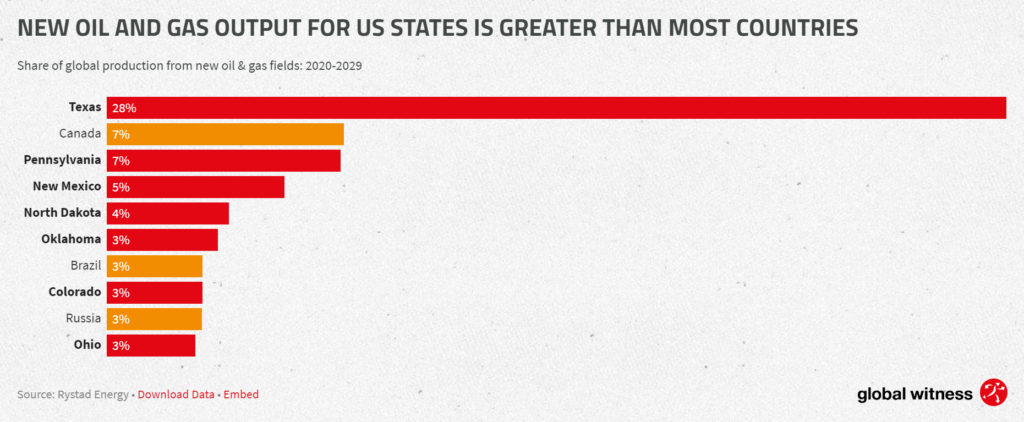
Production from new fields in the US is set to be eight times that of the next largest producing country – Canada. New US production is forecast to be 20 times that of Russia and more than 1.5 times the total of all other countries combined.
Output is set to be so vast that if US states were treated as countries, Texas is forecast to be the biggest producer of new oil and gas in its own right, with production nearly four times that of Canada.
Seven out of the top 10 biggest oil and gas producers would be US states, with only Canada, Brazil, and Russia making it onto the list. Pennsylvania is set to be the third largest producer of new oil and gas, producing more than double that of Russia.
If things don’t change, by the end of the next decade, new oil and gas fields in the US will produce more than twice what Saudi Arabia produces today.
The future of our changing climate and its increasingly devastating impacts across the globe will be shaped by future oil and gas production. And if the future of oil and gas production is decided by what happens in new fields, then it will be determined by what happens in the US in the next decade.
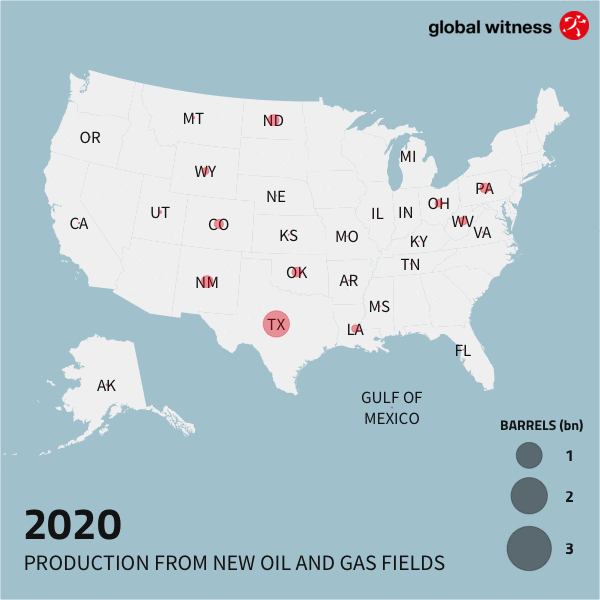
More oil and gas is a big problem
To avoid the worst impacts of climate change, our analysis shows that global oil and gas production needs to drop by 40% over the next decade. Yet, instead of declining, US oil and gas output is set to rise by 25 percent over this time, fueled by expansion in new fields.
By now, it should go without saying that burning more fossil fuels is a disaster for the world’s climate. Each extra barrel of oil that comes out of the ground becomes more planet-warming CO2 going into the atmosphere.
The recent National Climate Assessment starkly laid out the risks the US faces from climate change. These include more extreme temperatures, rainfall, high tides, coastal flooding and forest fires, as well as worsening air quality, all threatening the health and wellbeing of the American people. These risks are highest for those that are already vulnerable, including low-income communities, some communities of color, children, and the elderly. The financial costs are staggering too, under a high emissions scenario where the world fails to mitigate climate change costs to the US economy could exceed $500 billion a year by 2090.
In addition to these harmful impacts and costs in the US, impoverished countries will continue to be hit the hardest by climate change and are at a disadvantage when it comes to managing these impacts.
So if all this new oil and gas production goes ahead in the US, it would drown the world in oil and gas – slowing down the shift from fossil fuels to renewables and releasing vast amounts of planet-heating greenhouse gases.
The US’s next president needs to have a plan
Climate change is set to become one of the biggest issues in the 2020 US presidential election, and is already a key issue in the race for the Democratic nomination. Almost all Democratic candidates have already emphasized the need to stop this unsustainable growth in US oil and gas production, committing to a moratorium on new fossil fuel extraction on federal lands. With about a quarter of US oil production taking place on federal lands, this is significant.
With respect to the other three quarters of US oil and gas production that takes place on privately owned land, the next president should look to eliminate fossil fuel subsidies. Official estimates for such subsidies range from $4.6 billion to a staggering $649 billion a year.
A recent study found that based on recent low oil prices, up to half of new US oil fields rely on government subsidies to be economically viable. This means that without these subsidies, those projects wouldn’t proceed. For the projects that are viable without subsidies, the money will go into the pockets of the oil and gas companies, giving them more money to invest in more new projects or simply boost corporate profits.
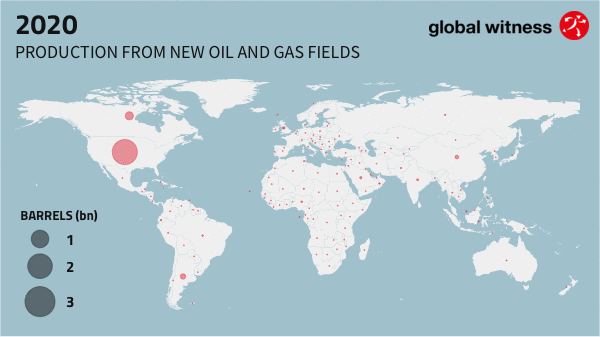
According to Greenpeace’s tracker of the Democratic presidential candidates, almost all are now on the record in favor of ending fossil fuel subsidies.
Scrapping these subsidies can also free up huge sums of money to ensure a fair deal for workers and communities that are currently reliant on polluting high carbon industries, through what is known as a just transition.
To ensure these policies become a reality, whoever wins the election will need to be free of the fossil fuel industry’s huge political influence over their administration. That’s why campaigners have now pushed 21 of the Democratic candidates to sign the No Fossil Fuel Money pledge, rejecting the financial support of the fossil fuel industry for their campaign.
Time for a proper debate
Climate change isn’t a single issue topic; how governments act to curb climate change will touch almost every aspect of the economy and society overall. The climate crisis deserves dedicated space for the Democratic candidates to fully explain their plans and debate them with one another, as well as to be tested on their public commitments.
Here are the top questions we’d like to see the candidates answer in a dedicated climate debate:
- What action do you intend to take to curb oil and gas production from public lands and waters?
- Will you end government subsidies for oil and gas production? How will you ensure the money saved benefits the communities affected?
- Will you commit to not approving new oil and gas pipelines, export terminals and other infrastructure?
- How will you ensure your appointees to key agencies like the Environmental Protection Agency and the Department of the Interior serve the public interest and not the fossil fuel lobby?
The American people deserve to know what these candidates’ plans are and where their priorities lie.
This week, the DNC will vote on whether or not to host a dedicated climate debate – we believe it’s vital they do.
The next US president needs to have a credible plan for tackling climate change. And any credible plan to tackle climate change has to prevent the US from drowning the world in oil.

